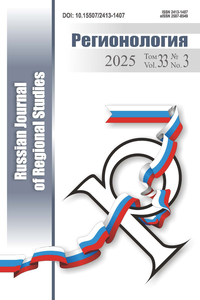N. V. SHILOV. MIGRANT PHOBIA AS A RISK FACTOR FOR THE OCCURRENCE OF INTERETHNIC CONFLICTS
N. V. SHILOV.
MIGRANT PHOBIA AS A RISK FACTOR FOR THE OCCURRENCE OF INTERETHNIC CONFLICTS
Key words: migrants, migrant workers, xenophobia, migrant phobia, labor force, interethnic conflict, monitoring, standard of living
Abstract. Based on the results of sociological research, the phenomenon of migrant phobia spreading among the population of the regions in connection with the intensification of labor migration to Russia was examined. A number of recommendations to overcome the phenomenon of xenophobia and migrant phobia were proposed.
Synopsis. Introduction: migrant phobia has become one of the main manifestations of xenophobia in post-Soviet Russia; to be more precise, it has been the negative and even aggressive attitude to labor migrants from Central Asian states and partly — to migrants from China and Vietnam. Close to this type of xenophobia is the similar attitude toward people from the Caucasus and often no distinction is made between citizens of the Russian Federation, for example, the North Caucasus peoples, and citizens of Azerbaijan, Armenia, and Georgia. This problem is particularly apparent in big cities that attract the main flow of cheap labor from the neighboring countries. In this regard, Moscow is indicative as the problem of migrants is one of the most acute for its residents. This thesis is confirmed by the results of a survey conducted by the author within the framework of the project of the Network of ethnological monitoring and early prevention of conflicts by the Institute for Ethnology and Anthropology of the Russian Academy of Sciences.
Materials and Methods: the paper used the comparative and factor analysis methods, as well as the method of observation. The method of survey carried out through a representative sampling was the factual basis of the study.
Results: the level of anxiety in society, including among the residents of Moscow, is quite high and this anxiety may affect other spheres of social life of Muscovites as well as their political preferences. Negative, neutral, and positive characteristics of migrants were identified. The negative ones are: "illegal immigrants, illegal workers, illegal hostels, underground cities, illegal residents" (54.0 %), "fictitious registration, "rubber» apartments, marriage of convenience» (47.5 %), "half-educated" (46.0 %), "other language, ignorance of the language, different culture" (43.5 %), "shadow economy, tax evasion" (43.0 %), "unskilled manpower, army of migrants, slave labour, dubious specialists" (42.5 %), "bribery, corruption, forged documents" (40.0 %), "ignorance of our culture" (40.0 %), "traders, speculators, wogs" (38.0 %). The neutral ones are: "Ukrainians" (35.5 %), "Uzbeks" (35.0 %), "Tajiks" (31.5 %), "Azerbaijanis" (31.0 %), and "persons from the Caucasus" (31.0 %). Among the positive, pragmatic and rational markers (appraisals), which characterize the situation associated with migrants and their activities in Moscow, it is possible to single out the following: "reasonable regulation of migration
is needed" (46.5 % of respondents), "ethnic cuisine" (43.5 %), "cleanliness in yards and streets" (38.0 %), "appreciate family, large families, respect towards elders" (35.0 %).
Discussion and Conclusions: the results of the conducted survey did not reveal any situations of brewing conflicts in the sphere of interethnic relations. At the same time, for part of the respondents intolerant attitudes are typical. It should be taken into account, that a significant portion of the population shares the prejudices against members of particular ethnic groups and foreign migrants common in the media environment. A number of negative aspects of the current social well-being of citizens are also typical.
SHILOV Nikolai Vladimirovich, Candidate of Historical Science, Associate Professor at the Department of Political Sociology, Russian State University for the Humanities (Moscow, Russian Federation), e-mail: kpsrsuh@gmail.com.

All the materials of the "REGIONOLOGY" journal are available under Creative Commons «Attribution» 4.0
















